Business in Suriname

Foreign Trade and Business in Suriname - Paramaribo. Surinamese Economy
- Introduction to Suriname
- Business in Paramaribo
- Surinamese Economy
- Surinamese International Trade
- Business Opportunities in Suriname
- Access to the Surinamese Market
- Business Plan for Suriname
The objectives of the subject «Doing Business in Suriname» are the following:
- To analyze the Surinamese Economy and Global Trade
- To explore the Business Opportunities in Suriname
- To analyze the trade relations of Suriname with the country of the student
- To know the Trade Agreements of Suriname
- To develop a business plan for the Surinamese Market

The Subject «Foreign Trade and Business in Suriname» belongs to the following Online Programs taught by EENI Global Business School:
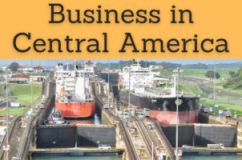
 Masters adapted for Surinamese Students.
Masters adapted for Surinamese Students.
International Trade and Business in Suriname

Preferential Access and Trade Agreements of Suriname:
- Suriname and the Caribbean Economic Area
- Association of Caribbean States
- CARICOM
- CARIFORUM-EU Agreement
- Colombia-CARICOM Agreement (Suriname)
- CARICOM-Dominican Republic Agreement
- Costa Rica-CARICOM Agreement (Suriname)
- UK-CARIFORUM Free Trade and Economic Integration Agreement
- UNASUR
- Latin American and Caribbean Economic System
- Islamic Trade Preferential System
- Islamic Centre for Development of Trade
- Suriname is a state associated to the MERCOSUR
- Global System of Trade Preferences among Developing Countries (GSTP) - accession process
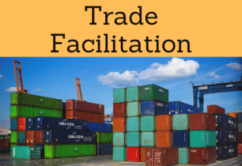
- WTO
- Agreement on Sanitary and Phytosanitary Measures
- GATS
- Agreement on Technical Barriers to Trade
- Agreement on Preshipment Inspection
- Agreement on Safeguards
- Trade Facilitation Agreement
- WCO
- COTIF Convention (Rail)
- BIC (Containers)
- Chicago Convention (ICAO)
- IMO
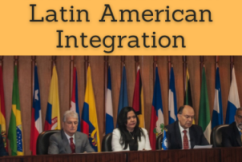
- CELAC
- OAS
- ECLAC
- Inter-American Development Bank
- Africa-South America Summit

- Islamic Development Bank
- OIC
- Summit of South American-Arab Countries

- UN
- WB
- WTO
- IMF
- Commonwealth
- ...
- Surinamese Capital: Paramaribo
- Borders of Suriname: Brazil, Guyana and French Guyana
- Area of Suriname: 163.820 km²;
- Territorial tensions with Guyana and French Guiana
- Population of Suriname: 550,000 inhabitants;
- Surinamese Population density: 3 inhabitants / km²
- 27% of the population are Hindustanis (originally from India)
- 21% of the population are maroons of African origin (African Diaspora)
- Suriname's official language is Dutch
- Sranan Tongo language is used by 40% of the population
- English, French, Spanish and Portuguese are widely used
- Abolition of Slavery in Suriname: 1863
- Main rivers: Suriname, Courantyne, Coppename, Marowijne, Nickerie
- Climate of Suriname: equatorial-tropical
- 1498: discovery by the Spanish
- 1498: discovery by the Spanish
- From the 16th century: British and Dutch colonization
- Formerly it was called Dutch Guiana
- Government Type: Presidential Republic
- Suriname became independent from the Netherlands in 1975
Main Religions in Suriname:
- Christianity: 48 % of the population Surinamese
- Hinduism: 23% of the population Surinamese
- Islam: 14% of the population Surinamese


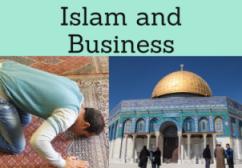
Suriname belongs to the:
- Caribbean Economic area of the Western Civilization
- Hindu Economic Area
- Islamic Economic Area
Surinamese Economy.
- Surinamese GDP: 9,067 million dollars
- GDP per capita of Suriname: 13,362 Dollars
- 25% of the Surinamese population works in the agricultural sector
- Main agricultural products: rice, bananas, wood, palm kernels, coconuts, peanuts, citrus and forest products
- Natural resources: bauxite, gold, oil, iron ore, other minerals, wood, fish, and shrimp
- The main economic activity in Suriname is the aluminum industry (15 of the GDP, 66% of the exports)
- Significant gold and bauxite reserves
- The bauxite industry accounts for 15% of the GDP and 70% of the export earnings
- Important hydroelectric potential
- Surinamese currency: the Surinamese Dollar (SRD)
- Country code top-level domain of Suriname: .sr
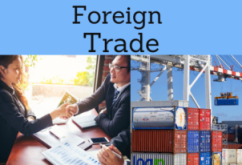
Surinamese Foreign Trade
- Main Exports of Suriname: aluminum, bauxite, rice, bananas, shrimp, gold, crude oil, wood, fish
- Main destinations of Suriname's exports: the U.S., Belgium, the Emirates, Canada, Guyana, France and Barbados
- Main imports of Suriname: capital goods, oil, food, cotton, consumer goods
- Largest providers of Suriname: the U.S., Netherlands, China, United Arab Emirates, Antigua and Barbuda, Netherlands Antilles and Japan
- Main trading partners: the Netherlands, the U.S., Canada, Trinidad and Tobago and the islands of the former Netherlands Antilles
- Agreement with Venezuela for oil importation (PetroCaribbean)

Transport and Logistics in Suriname:
- Main seaport: Paramaribo
- Other seaports: Albina, Moengo, Nieuw-Nickerie
- 4,304 Kilometers of roads (1,130 paved)
- Driving on the left
- 166 Kilometers of railway lines
- Zorg in Hoop Airport (Paramaribo)
(c) EENI Global Business School (1995-2024)
We do not use cookies
Top of this page




 (
(

